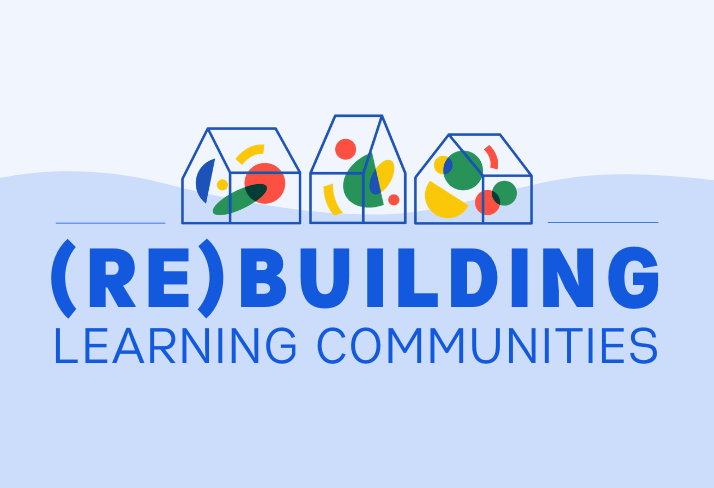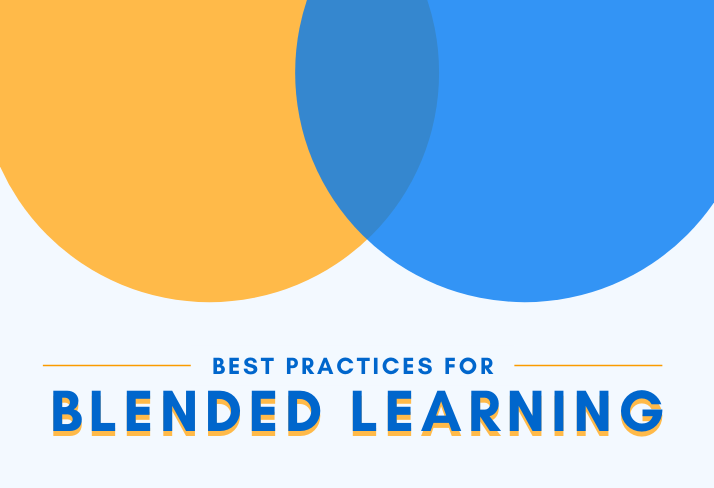|
Engage K-5 students in at-home activities that will help them enhance their social-emotional skills.
Enhancing social-emotional skills
Teachers know, perhaps better than anyone, what challenges students face when they learn outside of their typical classroom environment, or are only able to engage with their education virtually. They know the challenge of supporting anxious and overworked students who may have additional responsibilities to manage at home, limiting the time they have to devote to their own learning. Teachers also know that there are many students who, due to existing inequities, do not have access to the technology that is now a minimum requirement for learning in our new reality. Our Learning Through Living resources, which are designed to engage K-5 students in tech-free learning at home, can help you support your students, even when they don't always have access to your classroom. Through these resources, we hope to ignite curiosity and enhance students’ confidence in their abilities.
Using this resource
Included in this resource is a set of activities that allow young learners to use their everyday environment to enhance their social-emotional skills. Using minimal materials, you can use this collection to encourage play and creativity as your students explore reflection, tap into their imagination, and increase their self-awareness. You can also consider allowing older students to lead and teach those who are younger, or use the included ideas as a springboard for new ways to play and think about social-emotional learning.
To access additional free K-12 resources from our team, please visit our Resources page.
Engagement is a highway that leads students to their goals, and it is our job to build as many on-ramps as we can to capture all kinds of kids in all kinds of ways.
As educators, we often see the main priority of in-person schooling as the development of academic knowledge and skills, and that priority has carried over to the online learning space. Students, however, typically view school as a way to be a part of their social community. Seeing and being seen by friends is a huge factor for student attendance, and even in-class engagement. The social-emotional component of school is identity forming; it's where students develop a sense of self beyond their families, and the close quarters of the in-person classroom organically enhance this experience. But when we’re not together in the same place (or we’re together, but we’re socially distanced or wearing masks), authentic opportunities for students to connect with one another disappear.
In addition to finding a peer group, establishing relationships, and making connections with other students, school is the place where students can make a healthy connection with a caring adult who isn't a member of their family. Many students, especially those who are young, feel a close connection to their teachers. They give gifts, share hugs and high fives — in their little lives, teachers may be some of the only non-family adults they know, and some of the only adults they can develop a relationship with independent of a parent or a sibling. In the transition to remote learning, the opportunities for this type of social-emotional support and connection have almost fully evaporated, even as schools have figured out ways to provide academic opportunities.
Activating social-emotional engagement
The three pillars of student engagement — academic, intellectual, and social-emotional — are about maximizing any opportunity that can help bring kids to class. Academic engagement, or even just showing up, can lead to meaningful intellectual engagement, and that, in turn, can lead to organic social and emotional community experiences that meet students’ needs. Even students who are struggling to sign in to class or struggling to find meaning in instructional activities can still be motivated to connect on a personal level. What kind of social-emotional interactions do kids have? Think about the different types of organic connection points we find when school is in session, and then consider ways to match them with our online experiences.
Our hope is that students who haven't been "showing up" to school might show up to opportunities like these. If they do, it will refuel their energy and strengthen their social-emotional engagement with school, helping them to deepen personal connections that re-energize their sense of self. We can then leverage these connections to increase academic and intellectual engagement.
If we see student success in school as tied to anything — especially now — it is student engagement. Engagement is a highway towards students achieving their goals, and it is our job to build as many on-ramps as we can to capture all kinds of kids in all kinds of ways.
Developing social-emotional skills can help students better care for and advocate for themselves and others.
Balancing teaching your curriculum with finding time to discuss with students what they are experiencing and how they are feeling can be challenging. Yet staying connected with them and what they are going through is essential in order to continue supporting them. Students are dealing with many significant life changes and a range of emotions, many of which can be traced back to the shifts they've experienced during the pandemic — worrying about their own health and that of their family members and friends, feelings of loss about missed experiences, navigating a new form of learning, and being confined to their homes with their family members.
Supporting self-reflection
Bringing low-tech self-reflection practices into your classroom can be a helpful way to address the social-emotional needs of your students. Developing social-emotional skills can help students of all ages better care for and advocate for themselves and others. One way of incorporating at least a few minutes of self-reflection into lessons is by using social-emotional prompts (download a full set of our SEL prompts here). Our prompts are organized into several categories, drawn from the core social-emotional competencies identified by the educational research organization the Collaborative for Academic, Social, and Emotional Learning. Prompts fall into the following categories:
Using these prompts with your students
These prompts can be sent out over email, posted on a class’s online feed, or shared aloud during a real-time class. Students can respond to them in a variety of ways — using tech-free (drawing or writing in a journal), low-tech (typing in a document, making a video recording, making an audio recording, taking photos), or high-tech options (posting responses to a shared classroom file, such as on Google Drive). Before using these in your classroom, give yourself time to engage in your own self-reflection practices (through these prompts or other means) — this will support you in more thoughtfully facilitating social-emotional learning exercises for others. Take the time to introduce the idea of the prompts to your students. You may contextualize the prompts by sharing that they’ll help with self-reflection during this strange period of confusion and uncertainty. For students to fully express their answers, they may not be comfortable sharing any or all of their responses — determine what you think would be best for your students. There is still significant value in students responding to each prompt, even if they choose not to share with others. Below are a few ways that you can use these with your students in your online classes: LOW-TECH
HIGH-TECH
The earlier a connection begins, the better chance students have for developing necessary social-emotional skills.
Teacher training and education often does not shine a light on the importance of social-emotional growth for student academic achievement. We know our content. We have solid classroom management. Isn’t that enough? How do you find time for more? What if you feel nervous about connecting to students on a level outside of your field of study?
In their recent publication, the Utah Department of Health issued a status update on the impact of social-emotional development on health: “Historically, building success in children has meant an emphasis on academia; good math and reading skills yields good grades, which increases the likelihood of obtaining a college degree and securing more earning power. It goes without saying that core reading and math skills are important, but research shows it’s time to focus on another set of skills to build lifelong success—those within the social and emotional realm.”
Zero to Three, an organization dedicated to the well-being of infants and toddlers, further emphasizes the importance of social-emotional connections:
“Infant-early childhood mental health, sometimes referred to as social and emotional health, is the developing capacity of the child from birth to 5 years of age to form close and secure adult and peer relationships; experience, manage, and express a full range of emotions; and explore the environment and learn—all in the context of family, community, and culture.” We probably don’t need much convincing that children need connections with each other and with caring adults. It seems clear that the earlier their connections begin, the better the opportunity for a strong foundation upon which they can develop the necessary social-emotional skills needed to thrive. What we do need are practical ways to connect with our students within a limited amount of time. From grade school to middle school to high school, there are effective and efficient ways to integrate these connections into our practice.
Engage authentically
Each of your students is an original, and so are you. Express yourself in the style and manner that feels most real to you. You may connect with your students in quiet ways while your colleague across the hall conducts spotlight celebrations to connect with theirs. There is not only room for different styles, but there’s a need for them. When students are able to experience a variety of relationships and ways of connecting with adults, it gives them more opportunities to feel seen and find a sense of belonging. That quiet student in the back may connect best with a teacher who encourages in quiet ways. The student seeking attention may feel their needs being addressed when the teacher calls out their encouragement more publicly. And, let’s face it, students are pros at recognizing when an adult is faking interest, so choose something you’re genuinely interested in as a means of connecting. What are some interests of your own that you can share as a way of opening up a conversation? What would happen if everyone wrote down one thing they do or are curious to learn about (inside or outside of school)? These could be shared or kept between you and each student. The class could create a found poem or an original periodic table to represent the elements in your classroom community. What else comes to mind?
Grow your practice
Whether you’re simply starting out or are already a social-emotional skill-growing pro, reach for your next steps in connecting with your students. Read an article about prioritizing social-emotional competencies on your way home on the train. Or watch a TED Talk on the role of vulnerability in human connection, especially if you’re nervous about stepping outside of the comfort zone of your content area. Find a PD focused on social-emotional growth and sign yourself up! While you’re growing your knowledge, keep pushing your experience. Write down all the ways you already connect — which would you like to see more of in your own practice? Which need to be revived, like something you did when you first began teaching but has been on the back burner for the past few years? Find new ways to connect! Here are few suggestions that may spark new ideas:
Share the intention of your plan with your students as it makes sense to you, and ask them to hold you accountable by saying something like, “If I haven’t given you a sticky note by the end of the week, remind me that I owe you one, because I intend to notice contributions each of you are making to our classroom community.”
Enjoy the experience
As you’re making connections with your students, you are nurturing the growth of a child’s sense of well-being and belonging. Take a few moments from time to time and recognize the ways this is transforming you and your students. You’re creating community, together. You’re modeling and taking the lead in finding ways to connect. As you model ways of connecting, your students are watching. They are learning from you, and you will likely not know which acknowledgement, email, phone call, sticky note, or shout out they hold onto as they move through their days and weeks, in class and out. Connection shows them that someone cares. That someone is you. What an opportunity! What hard work and how valuable! Enjoy this process of planting seeds, trusting they will grow and bloom in gardens beyond your own.
The importance of social-emotional connections
The light is shining brighter, spotlighting the importance of social-emotional learning (SEL) for students. In The Importance of Social Emotional Learning for All Students Across All Grades, the National Education Association says: Research shows that SEL can have a positive impact on school climate and promote a host of academic, social, and emotional benefits for students. Durlak, Weissberg et al.’s recent meta-analysis of 213 rigorous studies of SEL in schools indicates that students receiving quality SEL instruction demonstrated:
Whether you’re nervous to step into the SEL world or already comfortable, continue to develop promising practices that support students as whole human beings and look for the positive results in yourself and in your students! |
|
The Center for Professional Education of Teachers (CPET) at Teachers College, Columbia University is committed to making excellent and equitable education accessible worldwide. CPET unites theory and practice to promote transformational change. We design innovative projects, cultivate sustainable partnerships, and conduct research through direct and online services to youth and educators. Grounded in adult learning theories, our six core principles structure our customized approach and expand the capacities of educators around the world.
|
ABOUT US
525 West 120th Street, Box 182 New York, NY 10027 416 Zankel Ph: (212) 678-3161 cpet@tc.edu Our Team Career Opportunities |
RESOURCES
Professional Articles Ready-to-Use Resources Teaching Today Podcast Upcoming PD Opportunities |
COACHING SERVICES
Custom Coaching Global Learning Alliance Literacy Unbound New Teacher Network Student Press Initiative |


































